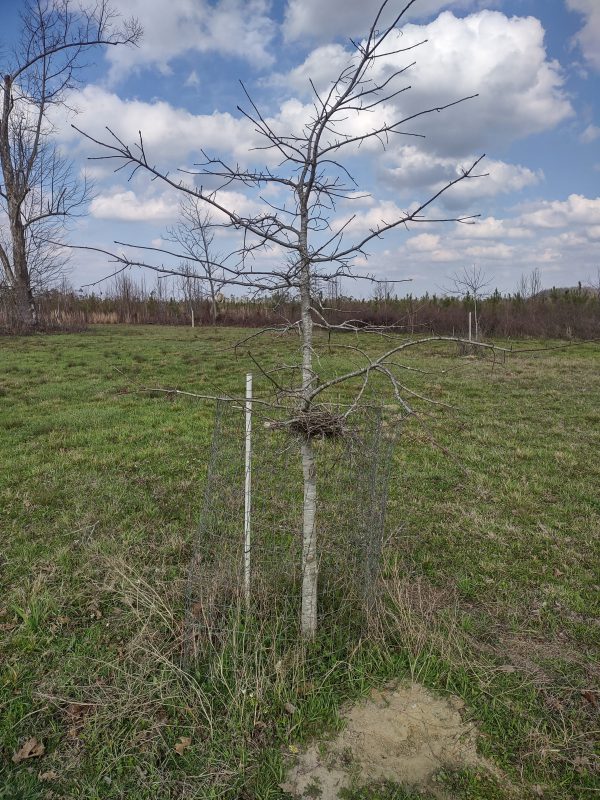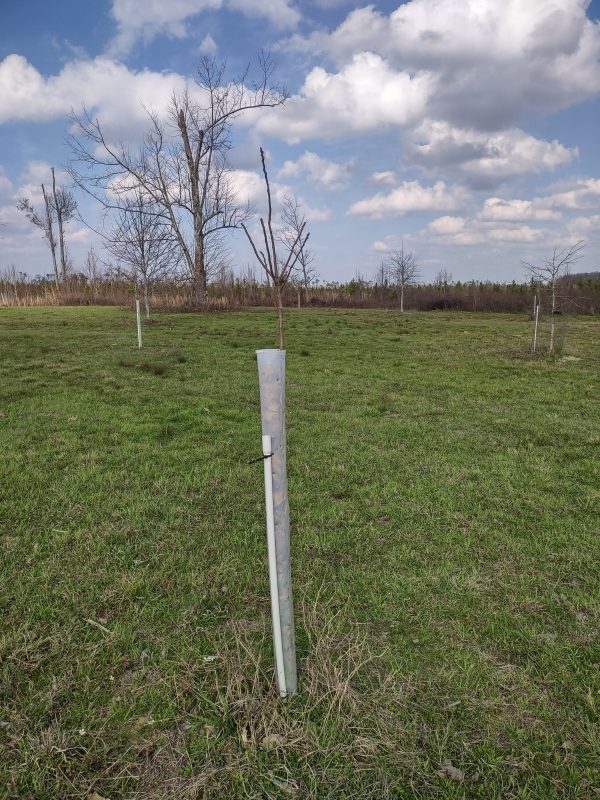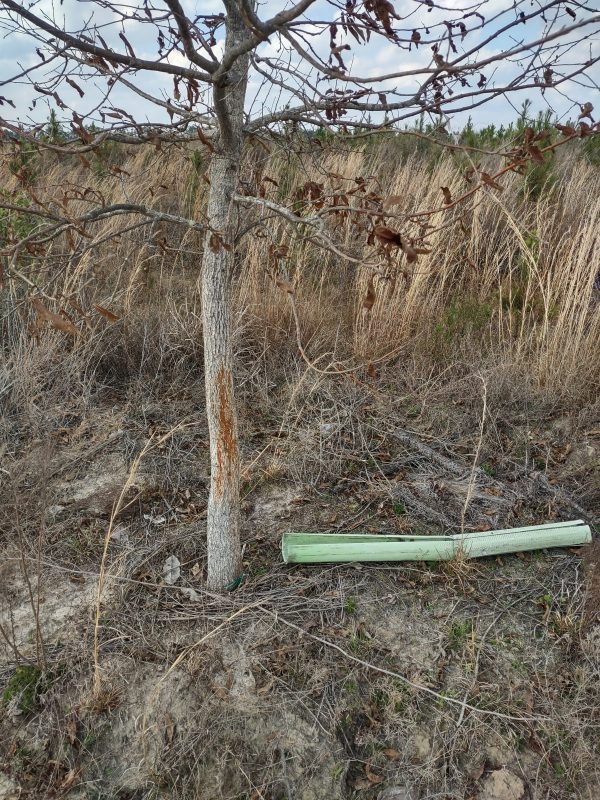Planting a variety of mast-producing hardwood trees on your property can enhance its wildlife attracting and holding abilities. These trees (oaks, chestnuts, pears, persimmons, etc.) provide many benefits, from creating an excellent location to view deer, turkeys, and other wildlife to ensuring a nutrient-dense food supply in the fall and winter when much native browse has gone dormant. Unfortunately, deer don’t wait to realize the long-term benefits of mast-producing trees and will do their best, through browsing tender new growth and bucks rubbing sapling trunks with their antlers, to destroy the fruits of your labor. The following are a few steps to prevent destruction by deer and ensure your mast trees will make it to maturity! –
–
Invest in Exclusionary Methods
Many home remedies promise deer deterrence (pepper, human hair, moth balls, etc.), but the only truly effective method for protecting young trees is exclusion, with either wire caging or plastic tree tubes. Though expensive ($5-10 per tree, plus a time and labor commitment to install), both methods, when employed properly, will protect your tree investment by preventing unwanted browsing and rubbing. Wire cages are practically indestructible and permanent, providing decades of protection. On the other hand, plastic tree tubes are temporary. They protect trees for their first few years of life and are then removed. Tubes also, through the greenhouse effect the plastic tubing creates, allow young trees to grow more rapidly than they would otherwise. In either case, to effectively get trees out of reach of browsing deer, cages and tubes should be a minimum of 5’ in height.

4-year old Shumard Oak (Quercus shumardii) protected by a 48″ wire cage staked with a 72″ section of Schedule 40 PVC.
–
Use the Right Staking Material for Tubes/Cages
Young tree saplings do not have enough trunk rigidity to support both themselves and a plastic tube or wire cage blowing in the breeze. Therefore, we must support exclusionary structures with a stake. Though there are many stake options, the best are rigid, durable, affordable, and removable when no longer needed. Having tried all manner of stakes from bamboo to steel rebar, I have found that 3/4” schedule 40 PVC is probably the best combination of the above characteristics. Regardless which stake material you choose, be sure to cut or purchase them 1’ longer than the exclusionary structure to ensure solid anchoring in the ground.

2-year old Chinese Chestnut (Castanea mollissima) protected by a 60″ Miracle Tube tree tube from Tree Pro staked with a 72″ section of Schedule 40 PVC.
Periodically Monitor Exclusionary Structures
Like anything else, tree exclusionary structures require maintenance to ensure that they work properly. Here is the small checklist I follow when out surveying mast tree plantings:
- Make sure fire ants haven’t built their bed up into the tube. This can cause the tube to retain water and rot the tree’s trunk. If you notice ant bed encroachment, destroy the bed, lift the tube a few inches off the ground, and secure there to the stake.
- Check stakes to ensure they are securely in the ground and firmly attached to tubes/cages. This includes replacing ties that may have broken.
- Remove weeds from inside and directly around your exclusions. Weeds compete with your trees for water, light, and nutrients and are detrimental to sapling growth. I bring a small hand or backpack sprayer filled with a 1-2% glyphosate solution for this task, but you can also hand pull if you prefer to avoid chemical herbicides.
While including mast-producing trees on your property is a great idea to benefit wildlife, they require help to survive their first few years of life. Empirical research and years of anecdotal experience by wildlife managers has proven that the only way to prevent wildlife from damaging these young mast trees is to use exclusionary methods like cages or tubes. Investing a little time, effort, and money into this practice can save you much frustration and ensure that your newly planted mast trees make it to maturity!
For more information on adding mast trees into a wildlife management program or any other agricultural/natural resource topic, contact your local UF/IFAS County Extension Office.
- Stay Ahead of Peanut Fungal Pathogens This Summer - August 8, 2025
- Panhandle Cotton Acres Are Down in 2025– Here’s the Reason - July 11, 2025
- It Snowed, But Has This Been a Historically Cold Winter? What the Data Says. - January 31, 2025

